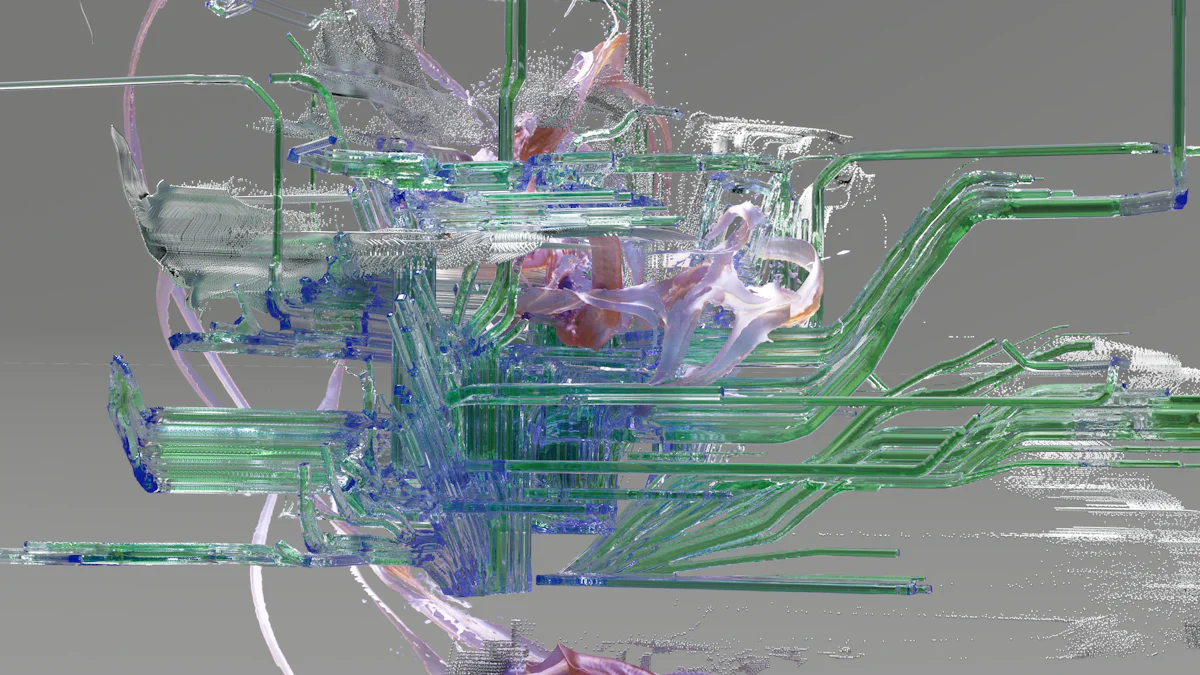
# What is RAG (opens new window) in AI (opens new window) and Why Should You Care?
In the realm of artificial intelligence (AI), understanding Retrieval-augmented generation (RAG) is crucial for grasping the advancements in natural language processing (opens new window). RAG serves as a bridge between retrieval and generation models, enhancing the quality of responses by integrating external knowledge (opens new window) sources. This innovative framework automates content creation tasks (opens new window), aids in medical diagnoses (opens new window), refines question-answering systems (opens new window), and tailors personalized content recommendations.
# Breaking Down the Basics of RAG
# The "R" in RAG: What Retrieval Means
At its core, RAG leverages retrieval techniques to fetch relevant information from external knowledge bases. By incorporating this retrieved data into generative AI (opens new window) models, RAG ensures that responses are accurate, up-to-date, and contextually rich.
# Augmenting AI with External Knowledge
One of the key features of RAG is its ability to augment AI systems (opens new window) with a wealth of external knowledge. This integration enhances the reliability and credibility of AI-generated content by grounding it in factual information sourced from diverse repositories.
# The Importance of RAG in Modern AI
# Keeping AI Informed and Up-to-Date
In today's fast-paced digital landscape, staying informed is paramount for AI systems to deliver relevant and reliable outputs. RAG plays a pivotal role in keeping AI algorithms abreast of the latest developments across various domains.
# Enhancing AI's Understanding and Responses
Moreover, RAG elevates AI's comprehension capabilities by infusing external insights into its decision-making processes. This infusion not only enriches the depth of understanding but also sharpens the precision of responses generated by AI models.
# How RAG Works: Bridging Knowledge in AI
In the realm of artificial intelligence (AI), the mechanics behind Retrieval-augmented generation (RAG) serve as a pivotal bridge connecting AI systems to external knowledge sources. This innovative framework revolutionizes information retrieval (opens new window) and content generation by seamlessly integrating retrieval and generative models.
# The Mechanics Behind RAG
# Connecting AI to External Knowledge Sources
RAG operates by establishing a dynamic connection between AI algorithms and vast repositories of external knowledge. By leveraging this link, RAG enhances the depth and accuracy (opens new window) of responses generated by AI models, ensuring that information is sourced from reliable and up-to-date references.
# The Role of Large Language Models (opens new window) in RAG
Large language models play a fundamental role in empowering RAG technology. These sophisticated models provide the foundation for processing vast amounts of textual data, enabling RAG to extract relevant insights from diverse sources with precision and efficiency.
# Examples of RAG in Action
# Improving Search Engines with RAG
By implementing RAG, search engines can deliver more nuanced and contextually relevant (opens new window) results to users. This enhancement enables search queries to be interpreted more accurately, leading to a refined user experience characterized by tailored information retrieval.
# Personalizing Recommendations Through RAG
In recommendation systems, RAG plays a transformative role in personalizing content suggestions based on individual preferences. By amalgamating external knowledge into the recommendation process, RAG ensures that users receive tailored suggestions that align closely with their interests and needs.
# Real-World Applications of RAG in AI
In the realm of healthcare, Retrieval-augmented generation (RAG) technology is revolutionizing diagnostic processes and treatment strategies. By leveraging RAG, healthcare professionals can access crucial medical texts (opens new window), case studies, and patient records swiftly to guide comprehensive evaluations and personalized care plans. This integration ensures that decisions are well-informed and backed by a wealth of data sources.
# Case Study: Enhancing Medical Research with RAG
An illustrative case study showcases how RAG assists medical researchers in extracting valuable insights from a multitude of external knowledge repositories. By seamlessly integrating retrieval techniques with generative models, researchers can enhance the accuracy and reliability of their findings, leading to groundbreaking advancements in medical science.
# Personalizing Patient Care with AI and RAG
Moreover, RAG plays a pivotal role in personalizing patient care experiences through AI-driven solutions. By tailoring treatment recommendations based on individual patient data and external medical knowledge, healthcare providers can offer more precise and effective interventions, ultimately improving patient outcomes.
In the field of education, RAG is transforming traditional learning paradigms by tailoring educational experiences to meet the diverse needs of students. This innovative approach combines information retrieval with text generation models to customize educational content (opens new window) dynamically.
# Customizing Educational Content with RAG
Educators can leverage RAG technology to curate personalized learning materials sourced from various online platforms, databases, and academic resources. This customization ensures that students receive tailored content that aligns closely with their learning objectives and preferences.
# Supporting Teachers with AI-Assisted Tools
Furthermore, RAG empowers teachers by providing AI-assisted tools that streamline lesson planning, content creation, and student assessment processes. By automating routine tasks and offering data-driven insights, RAG enables educators to focus more on facilitating engaging learning experiences for their students.
# Final Thoughts on the Impact of RAG in AI
As we delve into the future of AI development, the role of Retrieval-augmented generation (RAG) technology emerges as a transformative force. The potential advancements and challenges that lie ahead showcase the dynamic landscape where RAG continues to shape information retrieval and content generation paradigms. Moreover, ethical considerations surrounding the utilization of RAG underscore the importance of responsible AI practices.
Understanding why RAG matters to you is pivotal in preparing for an AI-driven future. By embracing this innovative technology, individuals can actively participate in shaping AI landscapes, fostering informed decision-making processes, and contributing to ethical frameworks that govern AI applications.